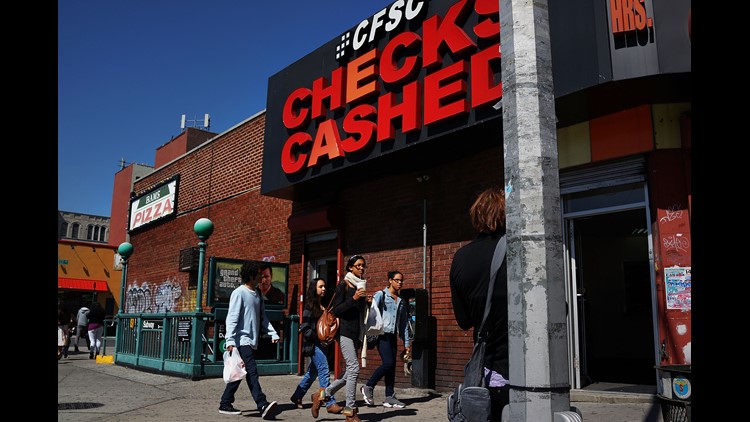You may be struggling to pay bills every month, but so are plenty of other people.
The Consumer Financial Protection Bureau on Tuesday reported that 43 percent of American adults struggle to make ends meet, based on the results of a national survey conducted in 2016 on the financial well-being of U.S. consumers.
About 34 percent of all consumers surveyed reported experiencing material hardships — these include running out of food, not being able to afford a place to live or lacking the money to seek medical treatment — in the past year, the bureau said.
In the survey, the bureau asked more than 6,000 participants from all walks of life to answer 10 questions about current and future financial security and freedom of choice, and to give a score from 0 to 100 on each question. The average consumer score was 54 in the survey. Not surprisingly, consumers surveyed said that their financial conditions were closely tied to their level of education, income and employment status, according to the bureau.
Young adults are especially susceptible to financial hardships, the agency found.
Millennials — those age 34 and below — reported an average score of 51 for their financial well-being, 10 points lower than seniors ages 65 and up and three points lower than the national average.
The report, what the bureau calls “the first of its kind,” not only provides a view of the the overall state of financial conditions in the U.S., it also sheds light on how individuals from different demographics are faring financially.
Adults with scores of 50 or below have a high likelihood — more than 50 percent — of struggling to pay bills and of experiencing difficult financial situations, according to the report.
In contrast, those who reported scores of 61 and above had a much lower probability -- less than 10 percent -- that they would have trouble paying for basic needs.
Savings = stability
Of all the factors examined, the bureau found that the amount of savings and financial cushions is the most important when it comes to disparities in people’s financial situations.
The average financial well-being for adults with savings of less than $250 — the lowest level — is 41. That compares with 68 for people with the highest level of savings -- $75,000 or more, according to the report.
Similar differences in scores were seen with the ability to absorb unexpected expenses.
“These findings highlight the importance of savings and other safety nets in helping people to feel financially secure, one of the basic elements of financial well-being,” the report said.
Having some sort of financial knowledge appears to benefit financial well-being.
The survey found that individuals with higher levels of financial confidence, knowledge and day-to-day money management behaviors tend to report better financial conditions.
Apart from the survey, the bureau initiated an interactive online tool allowing consumers to measure their own financial well-being.
7 tips to improve your financial health:
- Have “rainy day” cash available. Often, people who feel they are broke don’t have the means to absorb unexpected expenses. We’ve ranked the best options for when you need cash fast. A good rule of thumb is to set aside at least three to six months’ worth of living expenses.
- Save. Save. Save. It’s never too early to start saving for retirement. Financial planners often suggest you stash at least 10 percent of your income every month.
- Focus on paying down high interest debts. Sometime it makes more sense to pay off debt than to save, especially if you have high-interest debt like credit cards. Here are four fast ways to achieve that goal.
- Consider changing your lifestyle. Lifestyle inflation is the ultimate budget-killer — a widespread phenomenon that occurs when people spend more as their incomes increase.
- Learn to ignore the Joneses. Focusing on your needs and goals rather than aligning them with the people in your life or in your social media feed is critical to being happy with the state of your finances and your life.
- Come up with strategies to help break your negative spending habits. For example, we’ve written about a simple $20 rule that can help break your credit card addiction. Explore other ways to break bad money habits here.
- Educate yourself. The more you know about your finances, the better off you’ll be. It doesn’t have to be complicated. Simply using an app to track your spending or asking your HR department for a review of your retirement savings options are good places to start. The key is to engage in day-to-day money management and establish a habit of saving and budgeting.
MagnifyMoney is a price comparison and financial education website, founded by former bankers who use their knowledge of how the system works to help you save money.



